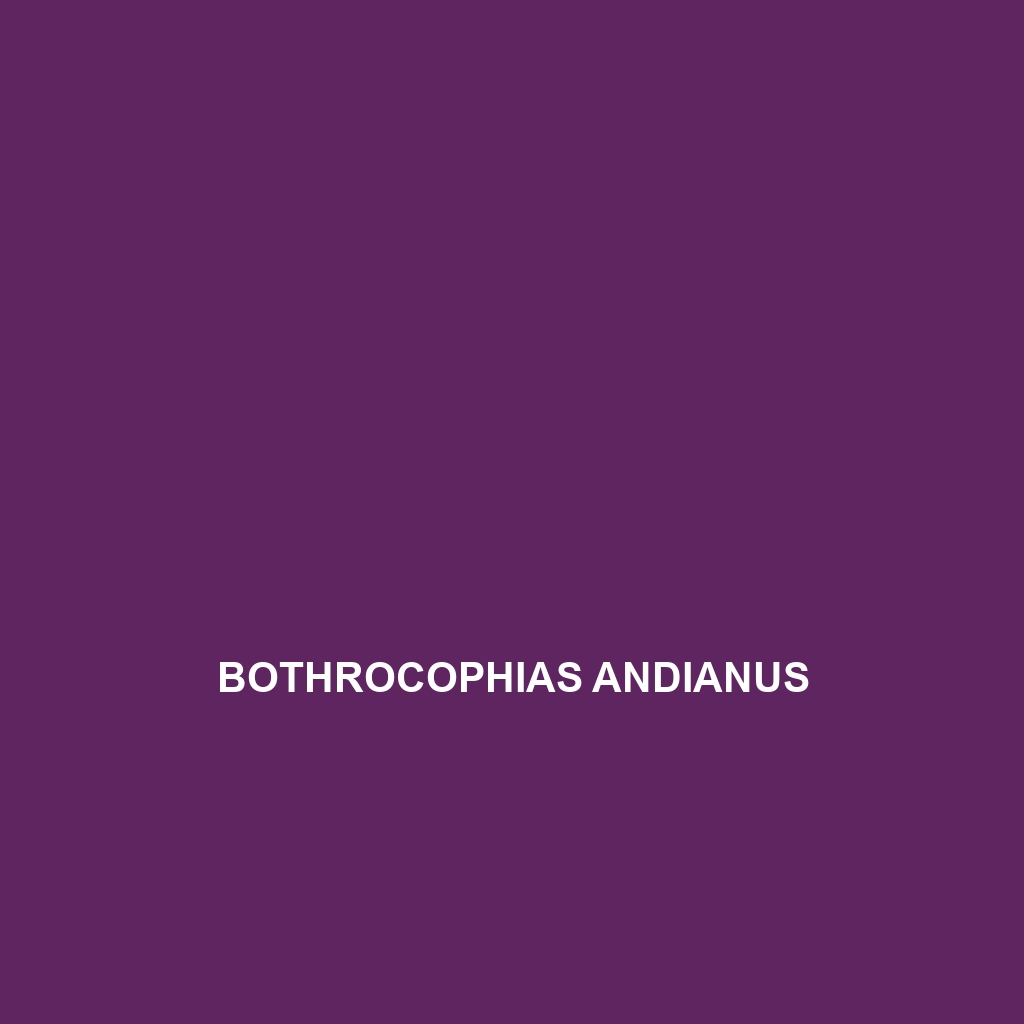Common Name: Bothrocophias andianus
Scientific Name: Bothrocophias andianus
Habitat:
Bothrocophias andianus, commonly found in the Andean mountain range, thrives in high-altitude environments across countries such as Peru and Bolivia. This species predominantly inhabits rocky slopes and grasslands at elevations between 2,500 and 3,500 meters, where it prefers areas with moderate humidity and sparse vegetation. The specific altitudinal range provides a unique ecological niche that supports its lifestyle.
Physical Characteristics:
The Bothrocophias andianus is noted for its remarkable adaptations to its harsh environment. Typically, adult individuals reach lengths of about 60 to 80 cm. They exhibit a striking coloration, with a dominant earth-toned body that features shades of brown and gray, enabling them to blend seamlessly into their rocky surroundings. A distinctive characteristic includes their elongated bodies and robust head, equipped with sharp fangs that play a crucial role in their survival.
Behavior:
These snakes are primarily crepuscular, meaning they are most active during dawn and dusk. Bothrocophias andianus exhibits a sedentary lifestyle; they prefer to remain hidden among rocks and foliage, utilizing ambush tactics to capture prey. Their defensive behavior includes curling into a coil when threatened, showcasing a vivid pattern that may deter potential predators. These serpents are also known for their cryptic coloring, which aids in their concealment.
Diet:
The diet of Bothrocophias andianus mainly consists of small mammals, birds, and lizards. As opportunistic predators, they rely on their exceptional camouflage to ambush unsuspecting prey. Their feeding habits are crucial to maintaining the ecological balance within their habitat. Additionally, this species employs constriction to subdue larger prey, making their diet both diverse and adaptive to the availability of food sources.
Reproduction:
Reproductive activities of Bothrocophias andianus occur during the warmer months, typically around the rainy season, which is essential for the survival of their offspring. Females give birth to live young, with litter sizes ranging from 5 to 15 juveniles. Notably, the young display impressive independence shortly after birth, which helps them evade predators and adapt to their environment more quickly.
Conservation Status:
Currently, Bothrocophias andianus is classified as vulnerable due to habitat loss and climate change impacts. Conservation efforts are critical to ensure the survival of this species, as its habitat is increasingly threatened by human activities such as mining and agriculture. Awareness programs aimed at preserving their natural habitat are essential for their long-term survival.
Interesting Facts:
One fascinating aspect of Bothrocophias andianus is its ability to regulate its body temperature through behavioral adaptations, such as basking on sunlit rocks during the day. Additionally, these snakes play a significant role in controlling the populations of their prey, thereby contributing to the health of the ecosystem.
Role in Ecosystem:
Bothrocophias andianus is an important predator within its mountainous habitat, helping to maintain the balance of small mammal and bird populations. Its presence indicates a healthy ecosystem, as it interacts with various species, including potential prey and competitors. By influencing the population dynamics of other species, Bothrocophias andianus contributes to the overall biodiversity and ecological integrity of the Andean region.
